
Camp Westerbork, also known as Westerbork transit camp, was a Nazi transit camp in the province of Drenthe in the Northeastern Netherlands, during World War II. It was located in the municipality of Westerbork, current-day Midden-Drenthe. Camp Westerbork was used as a staging location for sending Jews, Sinti and Roma to concentration camps elsewhere.
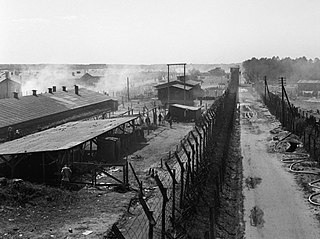
Bergen-Belsen, or Belsen, was a Nazi concentration camp in what is today Lower Saxony in northern Germany, southwest of the town of Bergen near Celle. Originally established as a prisoner of war camp, in 1943, parts of it became a concentration camp. Initially this was an "exchange camp", where Jewish hostages were held with the intention of exchanging them for German prisoners of war held overseas. The camp was later expanded to hold Jews from other concentration camps.
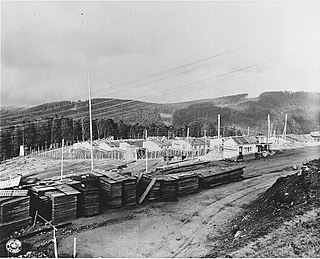
Natzweiler-Struthof was a Nazi concentration camp located in the Vosges Mountains close to the villages of Natzweiler and Struthof in the Gau Baden-Alsace of Germany, on territory annexed from France on a de facto basis in 1940. It operated from 21 May 1941 to September 1944, and was the only concentration camp established by the Germans in the territory of pre-war France. The camp was located in a heavily forested and isolated area at an elevation of 800 metres (2,600 ft).

Mittelbau-Dora was a Nazi concentration camp located near Nordhausen in Thuringia, Germany. It was established in late summer 1943 as a subcamp of Buchenwald concentration camp, supplying slave labour from many Eastern countries occupied by Germany, for extending the nearby tunnels in the Kohnstein and for manufacturing the V-2 rocket and the V-1 flying bomb. In the summer of 1944, Mittelbau became an independent concentration camp with numerous subcamps of its own. In 1945, most of the surviving inmates were sent on death marches or crammed in trains of box-cars by the SS. On 11 April 1945, US troops freed the remaining prisoners.

Josef Kramer was a Hauptsturmführer in the SS and the Commandant of Auschwitz-Birkenau and Bergen Belsen concentration camps. Dubbed The Beast of Belsen by camp inmates, he was a German Nazi war criminal, directly responsible for the deaths of thousands of people. He was detained by the British Army after the Second World War, convicted of war crimes, and hanged on the gallows in the prison at Hamelin by British executioner Albert Pierrepoint.
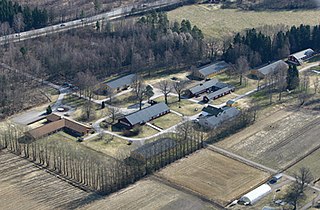
Berg interneringsleir was a concentration camp near Tønsberg in Norway that served as an internment and transit center for political prisoners and Jews during the Nazi occupation of Norway.

On 19 April 1943, members of the Belgian Resistance stopped a Holocaust train and freed a number of Jews who were being transported to Auschwitz concentration camp from Mechelen transit camp in Belgium, on the twentieth convoy from the camp. In the aftermath of the attack, a number of other captives were able to jump from the train as well. In all, 233 people managed to escape, of whom 118 ultimately survived. The remainder were either killed during the escape or were recaptured soon afterwards. The attack was unusual as an attempt by the resistance to free Jewish deportees and marks the only mass breakout by deportees on a Holocaust train.

Lucille Eichengreen was a survivor of the Łódź (Litzmannstadt) Ghetto and the Nazi German concentration camps of Auschwitz, Neuengamme and Bergen-Belsen. She moved to the United States in 1946, married, had two sons and worked as an insurance agent. In 1994, she published From Ashes to Life: My Memories of the Holocaust. She frequently lectured on the Holocaust at libraries, schools and universities in the U.S. and Germany. She took part in a documentary from the University of Giessen on life in the Ghetto, for which she was awarded an honorary doctorate.

The German occupation of Norway began on 9 April 1940. In 1942, there were at least 2,173 Jews in Norway. At least 775 of them were arrested, detained and/or deported. More than half of the Norwegians who died in camps in Germany were Jews. 742 Jews were murdered in the camps and 23 Jews died as a result of extrajudicial execution, murder and suicide during the war, bringing the total of Jewish Norwegian dead to at least 765, comprising 230 complete households.

Prior to the deportation of individuals of Jewish background to the concentration camps there were at least 2,173 Jews in Norway. During the Nazi occupation of Norway 772 of these were arrested, detained, and/or deported, most of them sent to Auschwitz or other extermination camps where 742 were murdered. 23 died as a result of extrajudicial execution, murder, and suicide during the war. Between 28 and 34 of those deported survived their continued imprisonment. The Norwegian police and German authorities kept records of these victims, and so, researchers were able to compile information about the deportees.
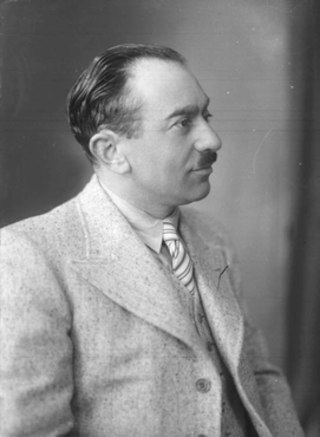
Moritz Moses Rabinowitz was a retail merchant based in the city of Haugesund, Norway. Rabinowitz was active in the Jewish community in Norway and was an early opponent of Nazism. After Nazi Germany invaded Norway, Rabinowitz was arrested and moved to Germany. He was murdered in Sachsenhausen concentration camp in 1942.

Julius Paltiel was one of the 26 Norwegian Jews who returned from Auschwitz. For their efforts in telling about the atrocities in the Nazi extermination camps, both Paltiel and his widow were awarded St. Olav's Medal, he in 2004 and she in 2016. Paltiel was given a Norwegian state funeral, attended by King Harald V.

Franz Hößler, also Franz Hössler was a Nazi German SS-Obersturmführer and Schutzhaftlagerführer at the Auschwitz-Birkenau, Dora-Mittelbau and Bergen-Belsen concentration camps during World War II. Captured by the Allies at the end of the war, Hößler was charged with war crimes in the First Bergen-Belsen Trial, found guilty, and sentenced to death. He was executed by hanging at Hameln Prison in 1945.
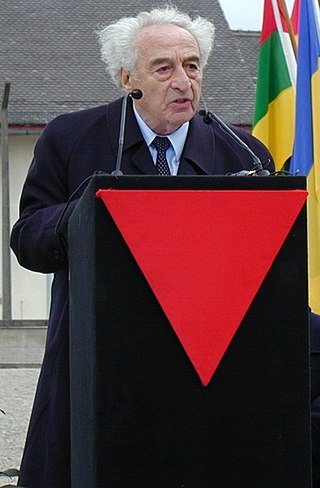
International concentration camp committees are organizations composed of former inmates of the various Nazi concentration camps, formed at various times, primarily after the Second World War. Although most survivors have since died and those who are still alive are generally octogenarians, the committees are still active.

Ernst Heinrich Schmidt was a German physician and member of the SS, who practised Nazi medicine in a variety of German concentration camps during World War II. He was tried in 1947 and 1975 for complicity in war crimes, but was acquitted both times.
This is a timeline of deportations of French Jews to Nazi extermination camps in German-occupied Europe during World War II. The overall total of Jews deported from France is a minimum of 75,721.

André Rogerie was a member of the French Resistance in World War II and survivor of seven Nazi concentration camps who testified after the war about what he had seen in the camps.
Victor Arnold Rosenblad Jacoby was a Norwegian writer and translator. He produced a large volume of juvenile literature for boys, comics, crime fiction, and biographies, and he worked as a translator of children's and young adult fiction from English into Norwegian.

Borys Tymofiyovych Romanchenko was a Ukrainian public figure, activist and non-Jewish Holocaust survivor who survived the Buchenwald, Dora and Bergen-Belsen concentration camps. He was killed by Russian airstrikes during the Battle of Kharkiv during the 2022 Russian invasion of Ukraine.
















